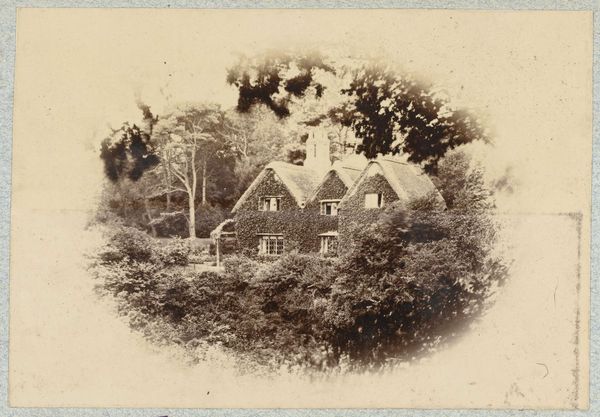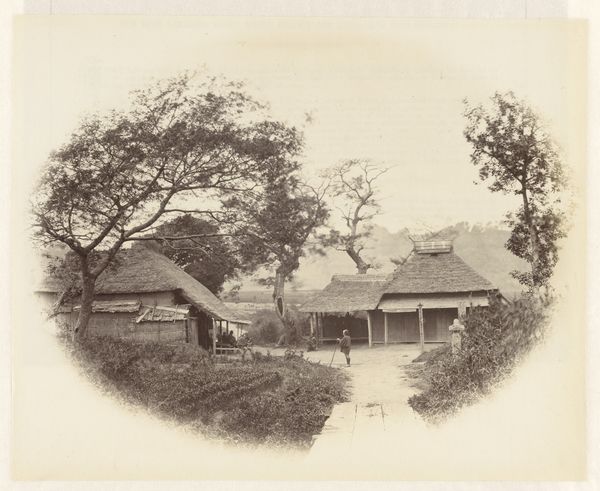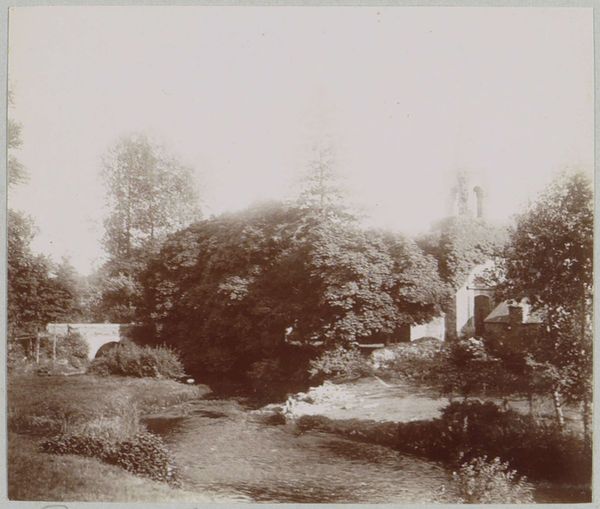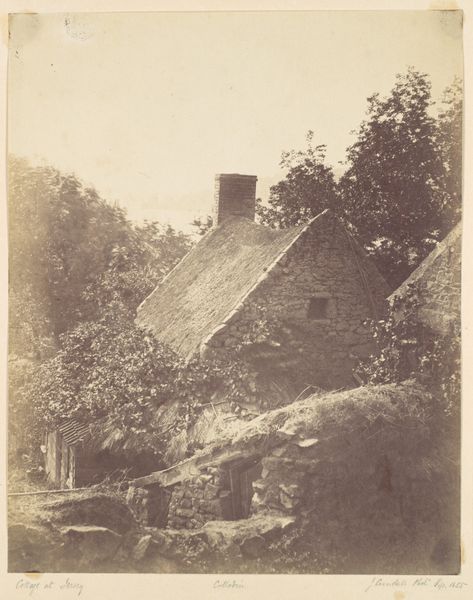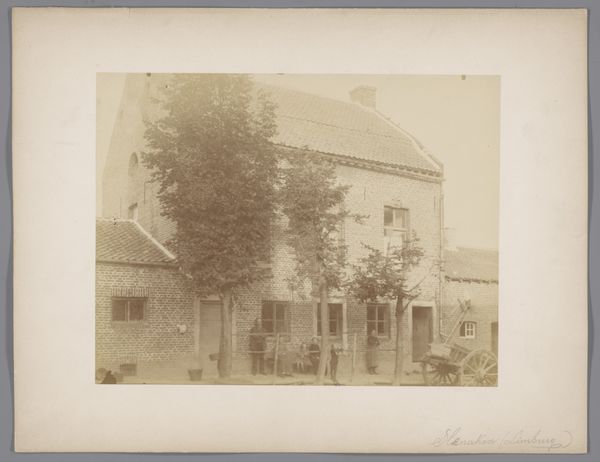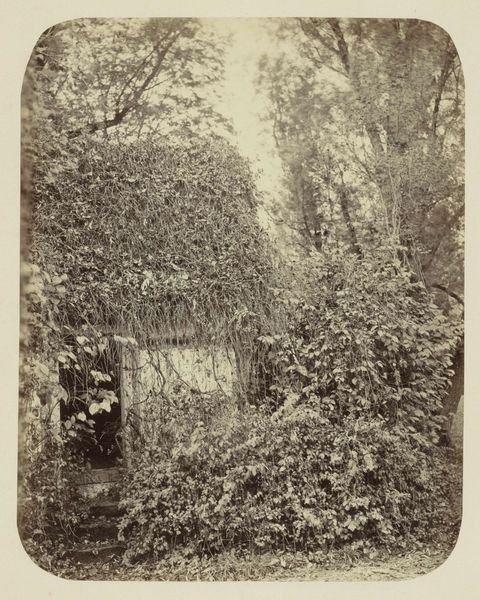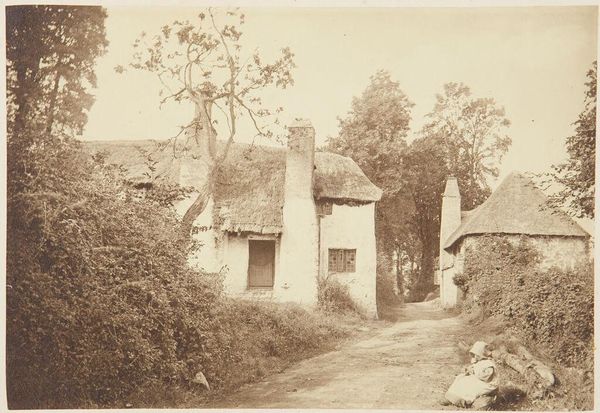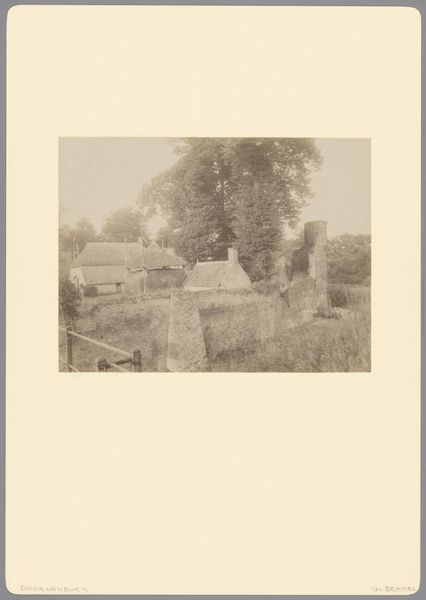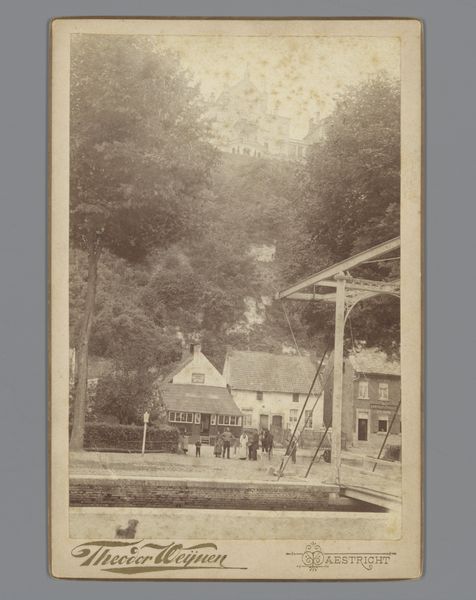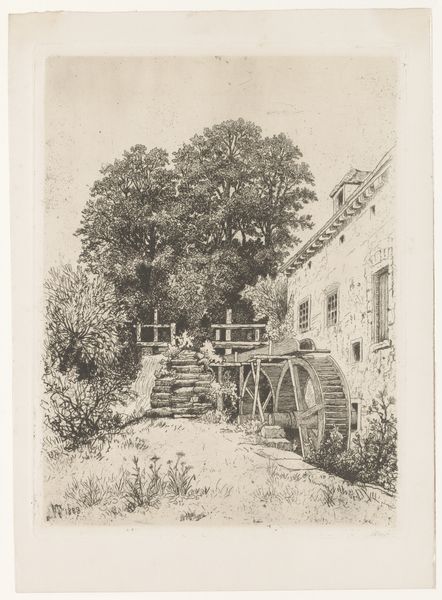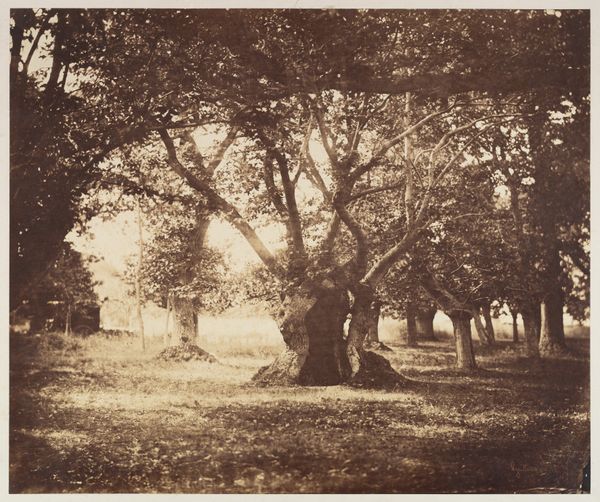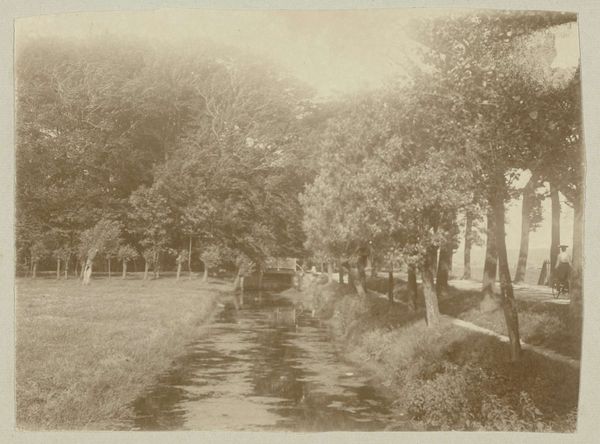
John Henning as Edie Ochiltree from Sir Walter Scott's "The Antiquary" 1843 - 1847
0:00
0:00
photography
#
countryside
#
landscape
#
house
#
photography
#
outdoor scenery
#
romanticism
#
men
Copyright: Public Domain
Curator: What a wonderfully evocative photograph! This is "John Henning as Edie Ochiltree from Sir Walter Scott's 'The Antiquary'," made between 1843 and 1847 by the pioneering Scottish team of Hill and Adamson. Editor: It’s incredibly soft. The way the light filters through the trees gives the whole scene this dreamlike quality, like a memory half-forgotten. Is that figure leaning on a staff in front of the cottage? Curator: It is indeed, playing Edie Ochiltree, a beggar character from Walter Scott's novel. Think of Scott’s influence: his romanticised vision of Scotland shaped much of the 19th-century perception of Scottish identity, both within and outside the country. Edie Ochiltree himself embodies a sort of folkloric wisdom. Editor: Precisely. There's an almost performative element here, right? By visualizing these figures, Hill and Adamson weren't just documenting; they were actively contributing to a specific image of Scottish identity. It seems to suggest something about how stories and characters shape cultural consciousness. Curator: And consider the symbolism of the cottage. It represents home, history, a connection to the land – all crucial aspects of the romantic ideal of Scotland. Notice how the climbing plants appear to be softening its solid edges, symbolizing how stories may blur facts and cultural symbols might grow or change in different eras. Editor: That’s insightful. There’s an undercurrent of societal critique there, too, perhaps subtly challenging the power structures embedded within that romantic narrative. Where does a character like Edie fit into the picture in Victorian Scotland? This image speaks to so much more than just Scottish folklore. Curator: It’s amazing to see the many layers they create, consciously or unconsciously. What I find remarkable about images like these is how they tap into collective memory and project an almost archetypal image onto something specific like a novel. Editor: Right, art gives us that uncanny ability to condense complex historical tensions and emotional weights into a single image. And in its focus, it can remind us that “history” is as much interpretation as it is concrete record.
Comments
No comments
Be the first to comment and join the conversation on the ultimate creative platform.
